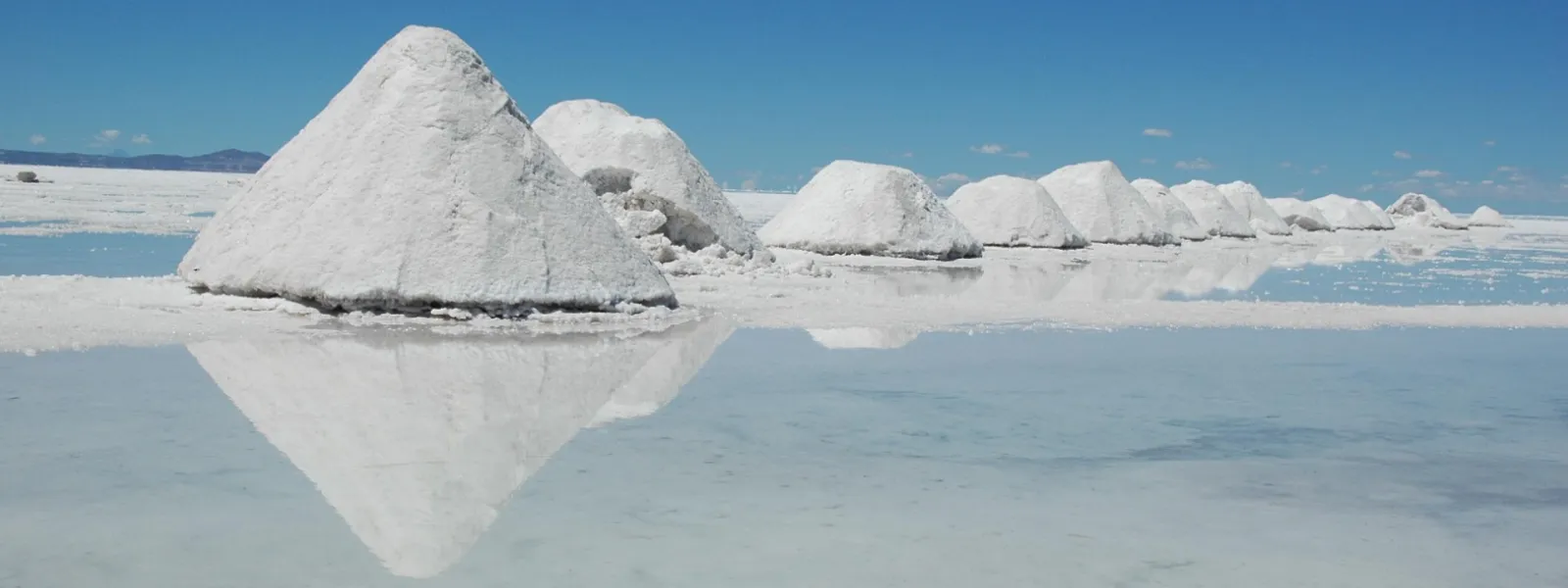
Lithium unveiled: Origins, extraction and environmental implications
Photo: Xavier Turpain/Pixabay.One of the paradoxes of the energy transition is that it replaces the use of fossil fuels with mineral resources whose extraction and refining can have negative impacts on ecosystems, species and communities.
This is happening with lithium, a mineral that has traditionally been used in glass and ceramics to provide greater adhesion and hardness, but is now being used primarily to make the batteries required by technologies that eliminate or reduce the use of fossil fuels.
This has led to an increase in its demand. The serious social and environmental impacts of its extraction have been hidden or minimized.
What makes lithium special?
Lithium is a mineral in high demand due to its unique properties:
- It is the lightest metal with the highest electrochemical potential.
- It has a high energy storage capacity.
- It is malleable, so it can be adapted to different sizes, shapes and designs.
These qualities make it a key material in the manufacture of batteries for cell phones, computers and, most importantly, electric vehicles.
Lithium is considered key to the energy transition because it can be used to store non-conventional renewable energy, such as wind and photovoltaic power.
Where it is: The so-called "lithium triangle"?
The primary sources of lithium are salt flats, which are wetlands covered with a saline crust that contain brines, bodies of water in which many salts and elements, including lithium, are dissolved.
Salt flats are attractive to the mining industry because of the relative technical ease of exploitation, low operating costs and low energy requirements to extract lithium from them compared to other sources.
Worldwide, the salt flats of Argentina, Bolivia and Chile account for 54 percent of lithium resources (potentially mineable material). In addition, Argentina and Chile hold 46 percent of the world's lithium reserves (the portion of known resources with a high level of confidence and proven economic viability).
The mining industry has dubbed the region where the mineral is concentrated the "Lithium Triangle" - because that is all they see there - which includes northeastern Argentina, northern Chile and southern Bolivia.
But there is much more than lithium in this region.
There are also communities, ecosystems and species that depend on these salt flats. The region's inhabitants are engaged in small-scale ranching and subsistence agriculture, activities that require water, an already scarce resource in these latitudes.
How is lithium mined from the salt flats?
The procedure is as follows:
- The salt flat is drilled.
- The brine is poured into large pools or basins.
- Wait for the water to evaporate so that the lithium concentration increases.
- When the concentration is sufficient, the brine is sent to an industrial plant.
- The brine is chemically treated to produce lithium carbonate, which is marketed for battery production.
Lithium extraction, especially by this method, involves huge consumption and loss of water because:
- Water is lost in pumping brine.
- Evaporation in ponds requires two million liters of water for every ton of lithium produced.
- Water is also needed in the final processes to obtain lithium carbonate and separate it from the rest of the compound.
Lithium mining is threatening South America's salt flats, which are Andean wetlands, affecting local water availability and threatening the survival of communities and species living around these fragile ecosystems.
The energy transition is urgent, but it must be equitable and not at the expense of other natural resource extraction that endangers people and the environment.
sources
-Maritza Tapia, “Claves del litio: el metal más liviano y con mayor potencial electroquímico”, Universidad de Chile.
-Heinrich Böll Stiftung Colombia, “Litio: los costos sociales y ambientales de la transición energética global”.
-Florencia Ballarino, “¿Qué es el litio, para qué sirve y de dónde se extrae en la Argentina?”, Chequeado.
-Wetlands International, “El impacto de la minería de litio en los Humedales Altoandinos”.
-Rodolfo Chisleanchi, “‘Triángulo de litio’: la amenaza a los salares de Bolivia, Chile y Argentina”, Mongabay Latam.
-U.S. Geological Survey, Mineral Commodity Summaries, January 2023, “Lithium”.
Mayela Sánchez García

Mayela Sánchez García is Mexican and AIDA's digital community specialist, working from Cholula, Mexico. She is a graduate in Journalism and Media Studies from the Instituto Tecnológico y de Estudios Superiores de Monterrey in Mexico. Mayela has significant experience as a journalist focused on social and human rights issues. She has worked in print and digital media, and has experience in podcast production.
